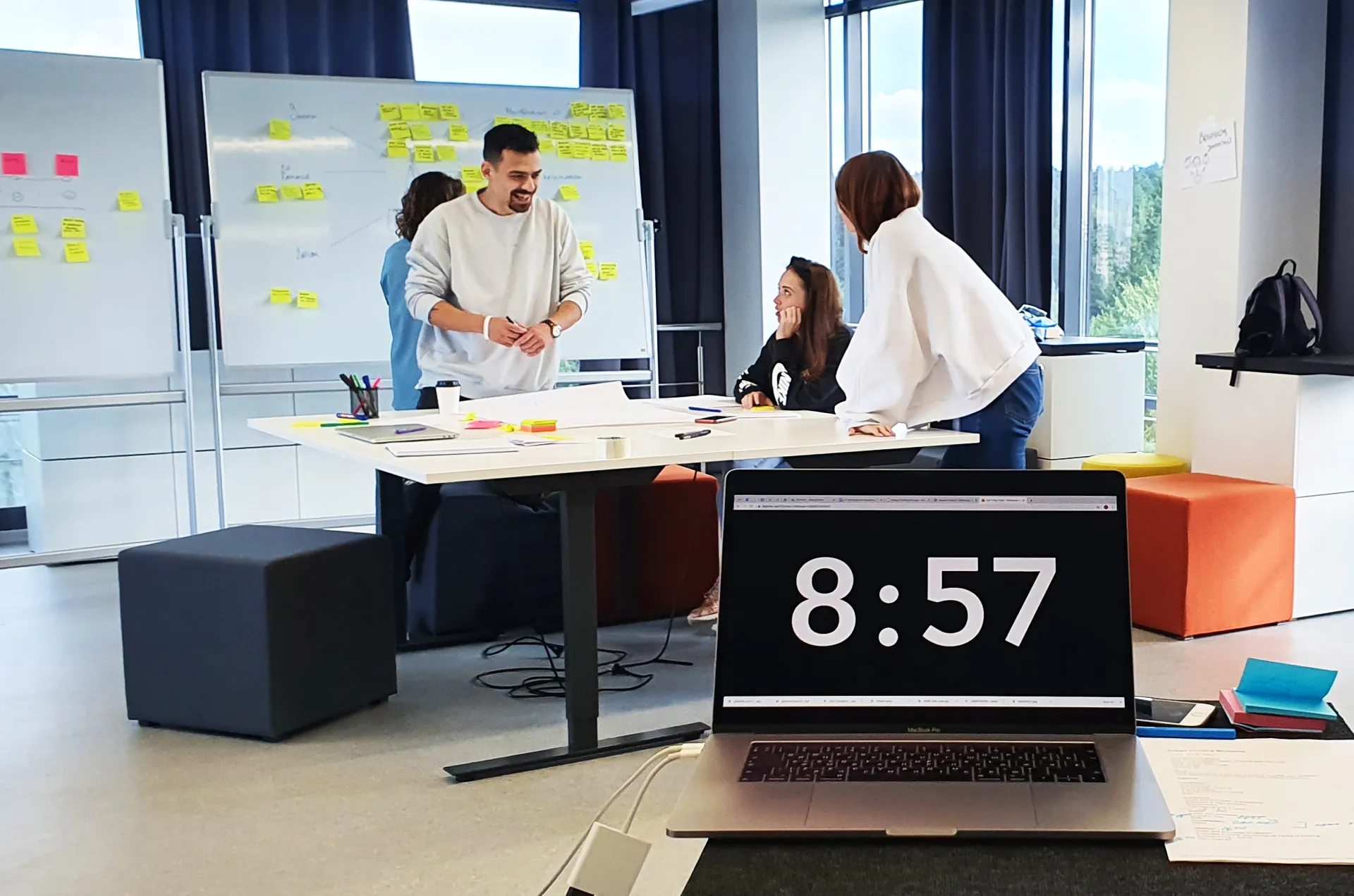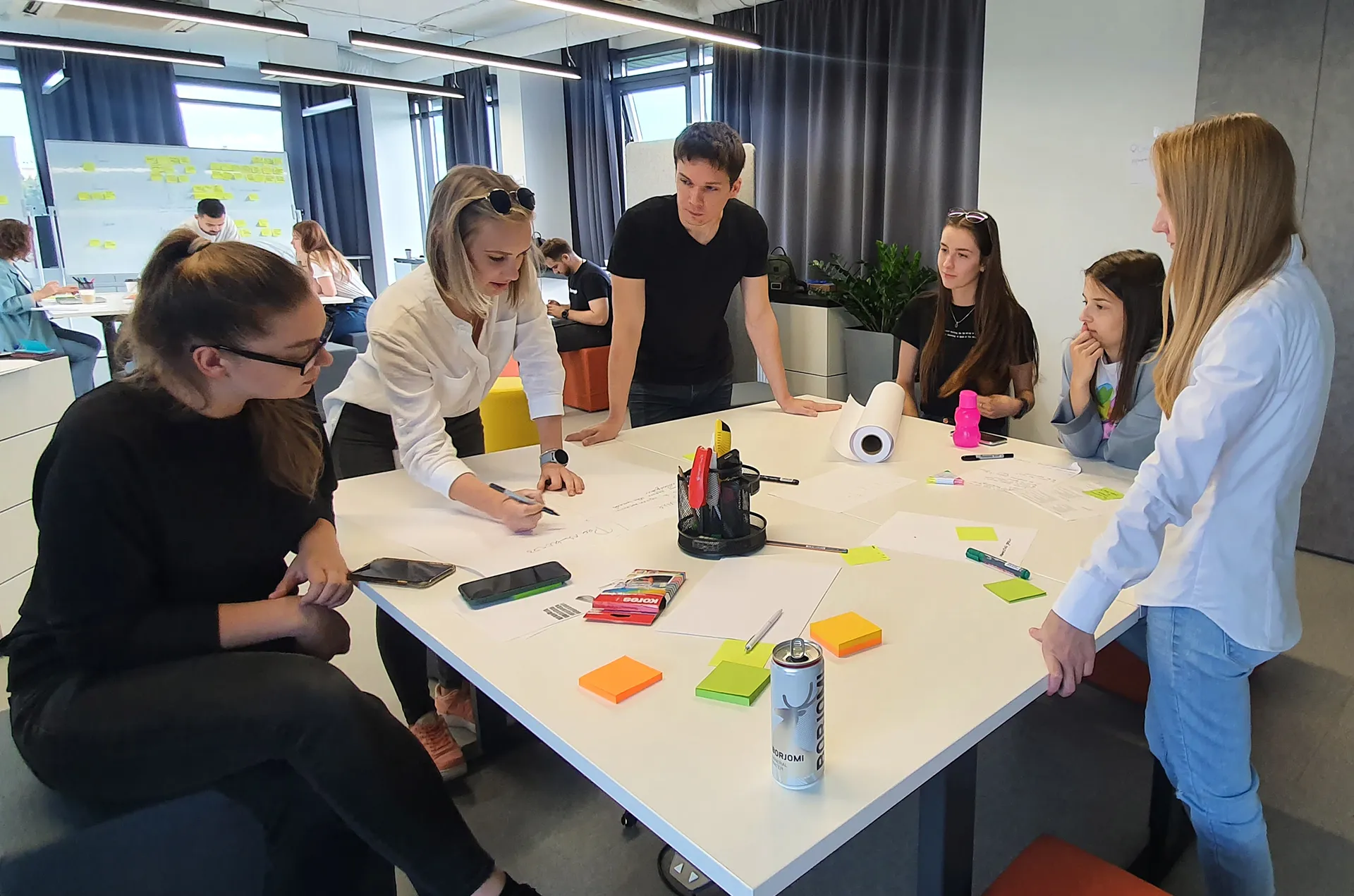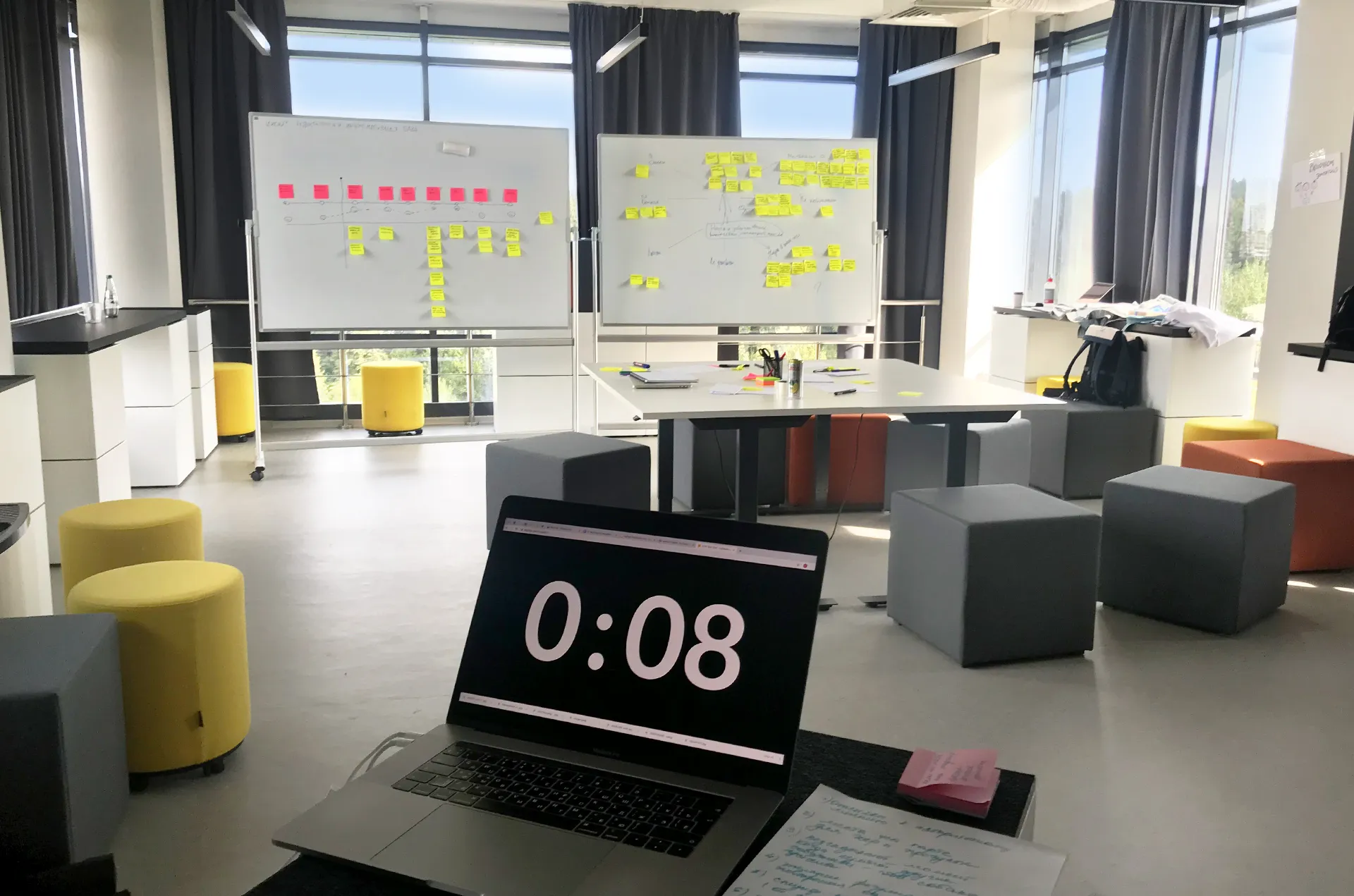Design Thinking educational workshop (upgrading GoDog)
Table of contents
While the Design Thinking methodology finds its use in our regular workshops, the Emerline’s pet training app goes on attracting keen dog lovers with new killer features. One day, our specialists decided to kill two birds with one stone and conducted a Design Thinking educational workshop dedicated to GoDog enhancements.
Why educational? Well, those Emerline specialists who have a proven command in the Design Thinking methodology shared their expertise and best DT practices with the rest of the design team.
Why GoDog? We are striving to continually improve our products and make them both visually attractive and extremely beneficial for users, where ‘beneficial’ stands for a perfect chance to achieve all targets in bringing up and training puppies or adult dogs.
So GoDog and the Design Thinking toolbox turned out to be a perfect match. DT was aimed to help the workshop participants define what the end users really need and how business would benefit from the app’s alterations. 
Are you ready to take part in the virtual tour to AppHaus, a creative space for conducting Design Thinking workshops, immerse yourself in the atmosphere, and imagine you are following each DT stage together with the app’s users?
We’ll show you what was happening during the workshop, while its moderator and certified Design Thinking expert will comment on the practical value of all workshop activities. And the main question is, does the Design Thinking methodology really have the power to help people generate tens of insights and app improving tips for 8 hours? Let’s figure it out together.
Stage 1. Empathize
What was happening in the AppHaus?
What do the app’s users feel about GoDog? What are their challenges related to the dog-owner interaction? Is there anything unclear or tricky? These and other questions were addressed to the GoDog users who became the active participants of the workshop, which allowed making up a list of insights about the app.
Expert comment:
“A starting point is to clearly define the current context related to the usage specifics of the app. For that reason, the workshop couldn’t do without real users, so they were among the participants. Guys who are taking care of their dogs and want to see them well-behaved, fit, and happy provided us with a clear picture of their opinion towards GoDog and some barriers on their way to exploring the whole set of the app’s functions.”
Stage 2. Define

What was happening in the AppHaus?
Time to examine the insights gathered during the first stage. That’s exactly what the workshop participants did, while producing tangible artifacts such as a customer journey map and a gap map, to name a few.
Expert comment:
“Our groups succeeded in trying multiple artifacts. After that, we crafted Point of View statements that expressed the problems the participants were trying to address. Among the DT activities here was “How Might We?” targeted at turning the issues into clear-cut questions to promote the ideas generation.”
Stage 3. Ideate
What was happening in the AppHaus?
The team moved to a challenging, yet fascinating part — generating and prioritizing new ideas from the user, business, and technology perspectives by utilizing different brainstorming techniques.
Expert comment:
“A brainstorm let us find those ‘golden’ ideas that meet the interests of both business and users. Their realization will increase the number of loyal app consumers, which brings value to business as well. To encourage the birth of new ideas, we carefully analyzed some latest trends in dog-human communication.”
Stage 4. Prototype
What was happening in the AppHaus?
With a bunch of ideas, the workshop participants delved into prototype creation. A major rule here is, never be afraid of making mistakes and reap the benefits from failure. Some ideas seemed genius on the face of it, but after their quick prototyping, it became obvious that their implementation was completely useless. 
Expert comment:
“Design Thinking prototypes are not ‘missile simulators’ — a key point here is to check out our idea for 5 minutes and without money costs. Lucky we to have the end users by our side — they are our litmus tests to decide whether the idea implemented as a prototype is valid. But that’s more about the next DT stage.”
Stage 5. Test
What was happening in the AppHaus?
GoDog users were the central figures throughout the stage, giving their feedback on the prototypes the workshop teams had provided. Thereby, the team discovered the ideas that are worth being realized.
Expert comment:
“Here comes a funny challenge. We all need to look at our ideas from the outside. When you are addicted to your prototype and make all efforts to prove it’s viable, it may negatively impact the efficiency. In fact, the team should be grateful for any shortcoming found during the Test stage — it saves money on costly releases. Mind the growth hacking formula saying that positive results hugely depend on continuous experiments, as only 30 out of 100 ideas will lead to success.”
Workshop Behind the Scenes: Top 3 Questions to the Emerline’s Design Thinking Expert

What is the proof that Design Thinking workshops really work in terms of generating powerful ideas?
Emerline never stops upgrading their products, adding new features, and making them more attractive to the target audience. GoDog is no exception — a series of researches on its strengths and weaknesses are continually conducted to determine the ways to improve the app.
It sounds incredible, but an eight-hour workshop can give an effect comparable to the months of investigations. Figures only: after the Design Thinking workshop, the participants generated over 50 tips on how to eliminate the users’ barriers, add more visibility to the dog training process, obtain more credit through the app content, etc. Their implementation is coming soon.
What about business? How does Design Thinking lead to monetization?
The methodology dictates multidisciplinary teams being involved in the DT process. Design specialists, marketing experts, product owners, end users, and test specialists work together to evaluate whether the idea is good enough from the business perspective.
While a design specialist is totally satisfied with the prototype, a marketing manager might seem skeptical towards client acquisition. This is the value of people with different backgrounds gathering together in one room — they all contribute to creating business beneficial solutions.
There is no need to launch an endless row of meetings — Design Thinking sessions provide a much quicker effect.
What to expect from the GoDog future releases?
I won’t show the cards right away, but the modifications are going to be numerous. Dog lovers will be truly delighted by the new features capable of transforming the view of the entire pet training concept.
Let me give you one clue — GoDog is not only about training, but also about making your pet fit and happy. Health is pure happiness, so get ready for nice pieces of advice for your pet.
Still don’t have a pooch? Maybe, it’s time to get a furry friend? GoDog is looking forward to becoming your personal dog training guide!
Updated on Oct 22, 2023





